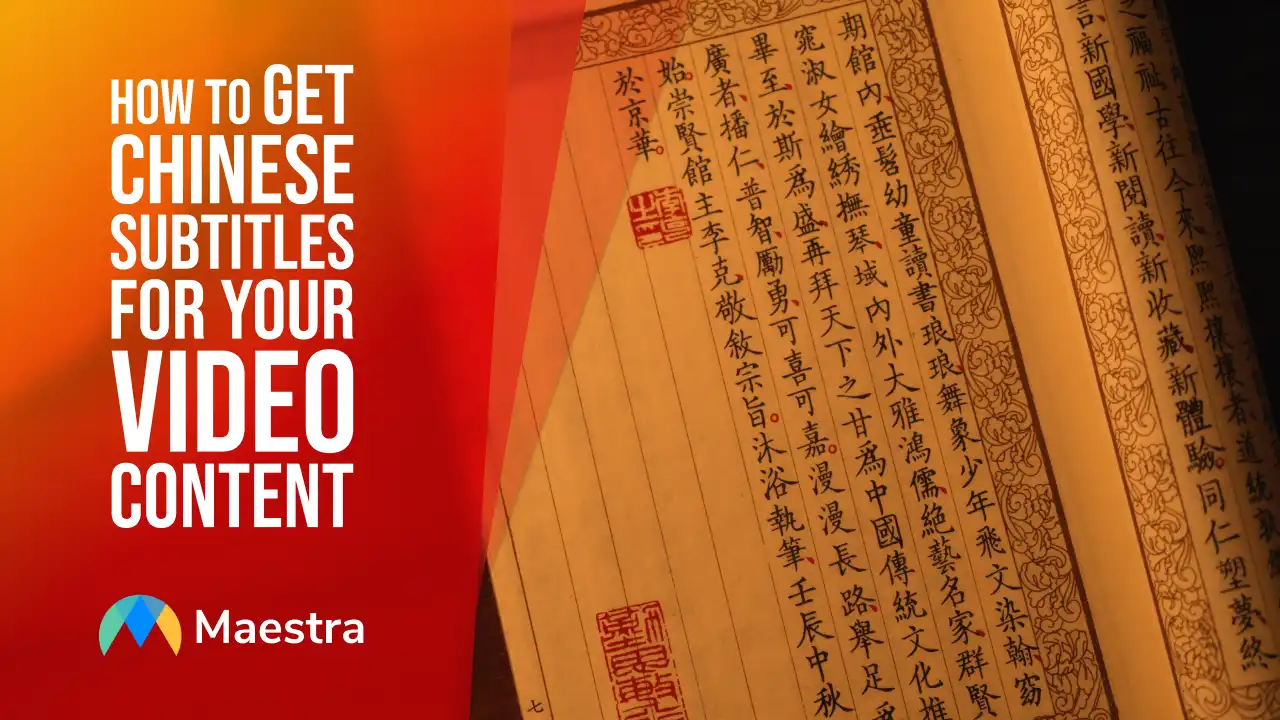How to Get Chinese Subtitles for Your Video Content

Methods To Get Chinese Subtitles For Your Content
There are two methods to transcribe and translate your subtitles into Chinese: manual transcription and AI-powered transcription. Manual transcription requires a human hand, while the auto subtitle generator process relies on the help of a highly intelligent computer to automatically transcribe your content and add auto-generated subtitles to your videos. There are a variety of additional differences between the two different approaches to creating subtitles and adding them to videos. Let’s take a deeper look at the pros and cons of each.Manual Translation and Transcription
The manual transcription and translation process is arduous, time-consuming, and often expensive. To manually add subtitles to content, you’ll need to first transcribe the video or audio content. You’ll then need to add those subtitle files to the video manually and sync them with the proper timestamps. Manual transcription tends to have a turnaround of several days to several weeks or even months, depending on the length and complexity of the content.AI Translation and Transcription
AI translation services create auto subtitles without you needing to lift a finger. They’re much more practical than manually translating and transcribing your content by hand. All you’ll need to do is upload your video or audio content. The program uses natural language processing (NLP) automatically generate subtitles in any language within seconds. Artificial intelligence services are able to automatically translate and transcribe the content, meaning you'll be able to see the transcript in real-time. You’ll only need to wait a few moments for your entire project to be transcribed.How To Get Chinese Subtitles The Hard Way
Manual transcription is a lot more challenging - and inefficient - than AI transcription, but it’s still a very common approach to getting Chinese subtitles or captions in other languages. To manually transcribe your Chinese subtitles, follow these steps:- Transcribe the video or audio file manually - Before adding subtitles to your content, you’ll first need to transcribe your audio or video file. To do this, you can listen to the audio file and write down every word you hear verbatim, taking care to avoid any inaccuracies. You may need to replay parts of the file multiple times. If you don’t know Chinese, you’ll need to hire someone who does or ask a friend to help you.
- Watch the video and add time codes to your transcription - Once you have your transcription, you’ll then need to match the words in your transcription up to the time codes in the video. This ensures that the audio and words are in sync. Like transcribing the video itself, this can take some time and a good bit of work to pull off accurately, so take care to rewatch the video multiple times if you need to.
- Download a video editing software - Now you have your transcription, you’ll need to download a video editing software so you can edit your video and add in the subtitles. There are many different video editing software options out there, so it is important to do your research and find one that is affordable and fits your business’s needs.
- Edit your video - The next step is to edit the subtitles into the video, taking care to follow the timestamps you have prepared. You’ll need to learn how to use the video editing software if you don’t already know how.
- Export or download your video - Once you’re done watching the video you have made, you can click ‘export file’
Using AI Transcription Services To Get Chinese Subtitles Faster
Thankfully, AI transcription services are an excellent alternative to manually transcribing your videos and uploading the subtitles yourself. Not only is AI transcription significantly faster, but it’s also much easier. AI transcriptions and translations are more accurate, too, since they aren’t subject to human error.Get Your AI Chinese Subtitles Through Maestra Studio
The best way to get Chinese subtitles for your video and audio content is by using Maestra Studio’s fast and intelligent AI tool. It’s a lot faster than manually transcribing and translating your content, and Maestra’s intelligent AI eliminates human error. Just follow these steps to get started with subtitling your Chinese content through Maestra:- Create an account or log in to your existing account - It’s simple, free, and easy to make a Maestra Studio account for your company or personal use.
- Upload your file - You’ll need to ensure that it is in one of the many file formats Maestra accepts.
- Let the AI work its magic - Once you have uploaded your video, watch as Maestra Studio’s AI tool translates and transcribes the content in real-time. Maestra can translate your video or audio into over 50 languages, including all dialects of Chinese including Mandarin and more.
- Export to your preferred file format - Just click ‘export file’ and you can use your file anywhere you like, whether you plan on posting it to social media or downloading it so you can send it to employees or business partners.
